Things made from bulky yarn with the onset of the winter season, they reached the peak of popularity. The products are delicate and airy. And every needlewoman can create them if she acquires materials for work and suitable knitting tools.
Classification of bulky yarns for knitting
The range of bulky yarn for knitting is very wide.
Initially, the material is determined:
- natural. Made from cotton, wool, cashmere and other natural fibers. Used to make clothes that will be in direct contact with exposed skin. Artificial fibers can cause allergies. They also collect dust and become electrified;
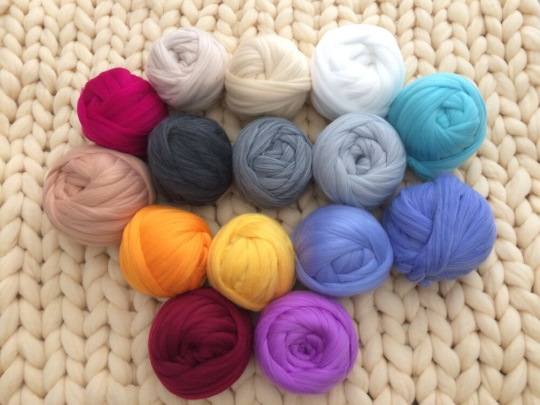
- synthetic. These are acrylic, polyester, nylon, microfiber. Synthetic fibers look much more attractive than natural ones, so they are used to make toys, blankets, rugs and other decorative textiles for the home;
- mixed. The yarn is made from both artificial and natural fibers. In this way, manufacturers try to create a material that demonstrates the advantages of all types, as well as eliminating their disadvantages.
You need to choose the yarn classification depending on what kind of product you plan to make from it.
Knitted tape
Knitted tape is obtained by cutting the fabric. Their width varies in the range of 2-3 cm. Usually, it is rolled into a tube with a diameter of 6-8 mm. Previously, there were no manufacturing plants that made knitted tape. However, the idea itself has a long history of existence. Old craftsmen cut knitted fabrics, creating yarn.

To work with knitted tape, select knitting needles and hooks with a diameter of 9-15 mm. They depend on the diameter of the yarn itself and on the size of the planned pattern (the larger, the larger the knitting needle). Modern production allows producing skeins of knitted tape ~ 100 m without knots. Tapes can be colored, patterned or plain.
Rovnitsa
Roving is a very thick combed tape that is not spun. It is made by twisting 2 or more fibers together. You don't have to do this manually - roving is available in a wide range on the market.
The yarn is very voluminous. To work with it, hooks and knitting needles are selected, starting from No. 15. The largest roving is worked with by hand.
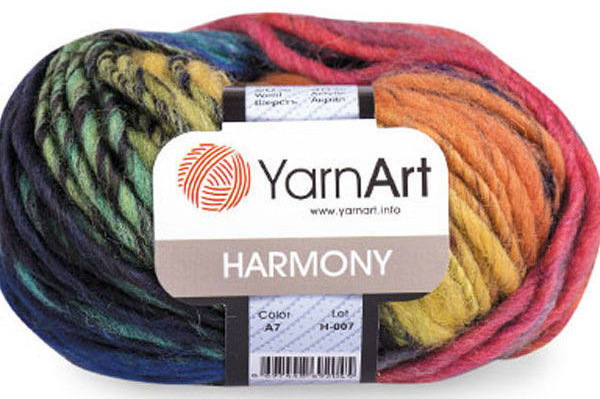
The following items are made from roving:
- cardigans;
- scarves;
- house slippers;
- blankets;
- bedspreads;
- baby blankets;
- robes.
It is not recommended for making rugs. After several months of use under constant load, it will become hard.
Lace
The cord yarn got its name due to its external resemblance to the object of the same name. It is hollow inside. Most often, such yarn is made by hand or with a special home machine. Hand-made production is notable for the fact that you can choose the color (or mix several shades), composition, and sizes yourself.

The lace is also offered in a factory format. It can be natural or synthetic. The first option is used to make clothes, the second - rugs, tablecloths.
Plush yarn
Plush yarn is made from chenille. Its main feature is that the leading cord is voluminous, but small villi protrude from it in different directions. This creates a feeling of softness and airiness.
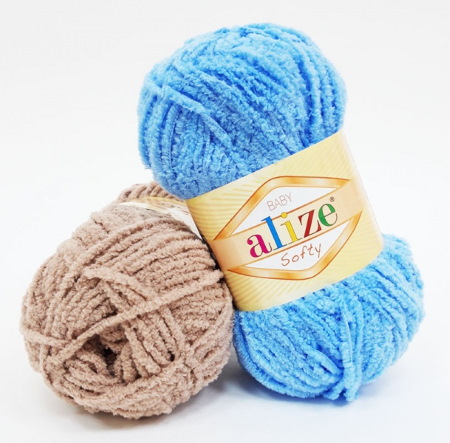
Plush yarn is suitable for hand, machine or needle knitting. Because of its versatility, there are many things that it is suitable for making. It is better to choose acrylic plush yarn, it is the highest quality - the products subsequently retain their original appearance for a long time.
Fancy pom pom yarn
Bulky yarn for knitting, which belongs to the pompom category, is unique in its kind. Its key feature is the different diameter of the thread along its entire length. The size can change randomly or systematically. Such yarn is also distinguished by the complexity of working with it. For this, hooks or knitting needles of large sizes are used, but the execution is characterized by painstaking.

It is used to make:
- children's things;
- toys;
- decorative textiles for the bedroom or children's room;
- unusual dresses for girls, young women and women.
For outerwear, choose the thickest pompom ribbons.
Pile thread
Pile yarn is made from regular fibers, but in such a way that small threads protrude from the front side, imitating fur. The material is very popular in the production of jackets and outerwear.

Also, due to the decorative properties of this yarn, it is used to decorate winter dresses and sweaters.
Fabric yarn
Fabric yarn is almost never found on sale. It is made at home. To create it, you need to take any textile product, cut it into small strips and roll it into a ball.
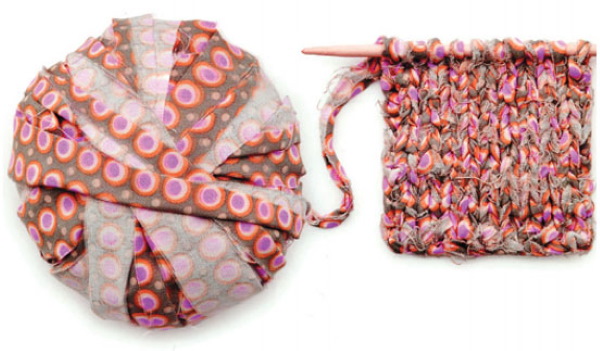
It is used to make:
- home rugs;
- pads for chairs, armchairs;
- stands for flower pots or vases.
Since such fabric yarn is considered a recycled material, clothing is usually not made from it.
Jelly
"Jelly" is the name of a rubber yarn. Rubber threads can consist of one or be twisted from several.
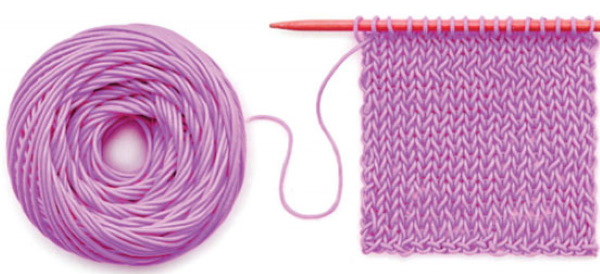
This product is used to make belts, bags, home decor (for example, a cover for an ordinary flower pot or a unique lampshade).
Other types
Another common type of yarn is "Sinnel". This is a soft and dense fabric that is made on a cotton-acrylic base. Some options are made only from acrylic. Due to its delicate structure, such yarn is used in the manufacture of children's things. It can also be used to make beautiful and soft toys.
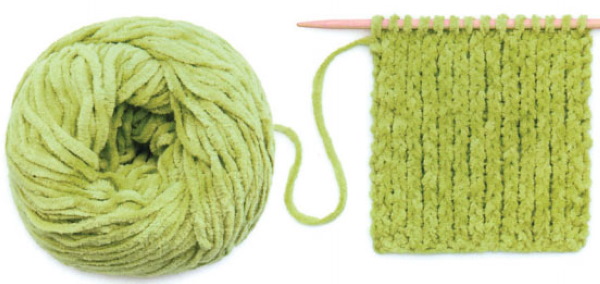
Another option is yarn with threads of different diameters, done by hand. Factory tapes are hard to find. To make beautiful clothes from this yarn, you need to choose the simplest cut. Patterns and texture are formed due to the difference in diameter. If you take an ornate style as a basis, it will be too overloaded.
How to choose thick threads
Bulky yarn for knitting is convenient because you can work with it using both special tools and your hands.
There are recommendations for choosing threads for each method of creating things.
For knitting needles:
- uniform thickness over the entire surface;
- the diameter is 1-2 sizes smaller than the needle size (otherwise the thread will rub against the surface, which will ruin its density and integrity);
- relatively smooth surface. The more roughness, the more inconvenience in the process of making a thing with knitting needles.
For the hook:
- uniform differences in thickness along the entire length (then you can create even loops), or their absence;
- the thread diameter must ideally match the hook size. Otherwise, it will be inconvenient to grab the loops;
- It is permissible to purchase yarn with a rough or fleecy surface - they do not interfere when working with a crochet hook.

If fine motor skills are well developed and the skill is honed, then you can work with any bulky yarn by hand, regardless of the type. Pay attention only to the raw materials. Some people have sensitive skin to synthetic fibers, so you will need to choose only natural yarn. Otherwise, irritation or allergies will appear.
Popular manufacturers and colors of bulky yarn
Bulky yarn for knitting is produced by many companies. You can see the most famous of them in the table.
| Name | Country of origin | Assortment | Brand Features |
| Alize | Türkiye | The choice is very wide: about 70 colors, ribbons of different volumes and lengths. The yarn offered is not only bulky, but also thin. | The manufacturer focuses on quality and availability for a wide consumer audience. |
| Hooked | Portugal | Only yarn for hand knitting. | The main principle of the company is to supply goods for handicrafts without the use of tools (only manual labor). |
| Nako | Türkiye | Only fantasy plush yarn (but in a wide range - more than 30 varieties). | The yarn is made from high-quality raw materials (acrylic, wool, polyester), so the prices are high. |
| Semenovskaya | Russia | Wool and acrylic yarns of different types. | The emphasis is on the length of the thread so that the buyer can make any fantasy come true, even the most complex one. |
| Kamtex | Russia | Wool yarn available in 30 different shades. | The main principle of the manufacturer is low weight, long length. The 400 g skeins contain 40 m of thick, bulky yarn. |
Where to buy, price
The most convenient way to buy bulky yarn is in online stores.
There are trading companies operating within the country. They usually offer delivery to all major cities. If there is no delivery, you can use the services of transport companies.
Thick yarn can also be found in online stores in Turkey or China. In this case, the purchase will be most profitable, but you will need to wait 2-8 weeks for delivery.
Approximate prices for some types of yarn:
- knitted tape - a skein of 100 m will cost 500-600 rubles;
- roving - a skein of natural wool (40 m or 500 g) will cost 1300-1500 rubles;
- lace. The price depends on the composition. If the product is synthetic, the price per skein will be about 200 rubles, if natural - 400-500 rubles.
The cost of the product depends on the manufacturer. The more popular the brand, the more you will have to pay. Most often, purchases are made in Chinese online stores, as they offer the best value for money.
What tools do you need for knitting with bulky yarn?
Bulky knitting yarn can be used for knitting with any tools and even by hand.
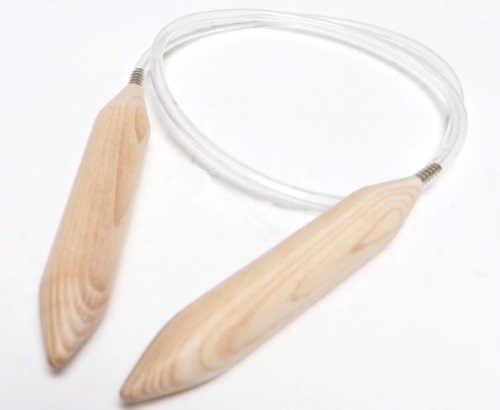
You can work with hooks #9 and #10, but they are not suitable for knitting all items. And hooks or knitting needles #15-20 can only be bought in large specialized stores.
Needlewomen highlight several of the best manufacturers of tools for knitting items from bulky yarn:
- The German company uses bamboo and plastic to make knitting needles and hooks. Bamboo ones are more expensive, but they are of better quality. The range includes circular knitting needles.
- The company offers budget straight knitting needles and thick plastic hooks.
- This is one of the few manufacturers that offers quality wooden hooks (maple). They are processed so that the product does not have nicks that can negatively affect the condition of the yarn item.
Step-by-step master classes on knitting
Bulky yarn for knitting is used to create various things for the home or clothing. The products are beautiful and unusual. Such threads are also suitable for training beginners, since they are convenient to work with, and small defects during knitting will not be noticeable on the finished item.
Plaid
You can create a beautiful blanket with your own hands in the literal sense (without using tools).
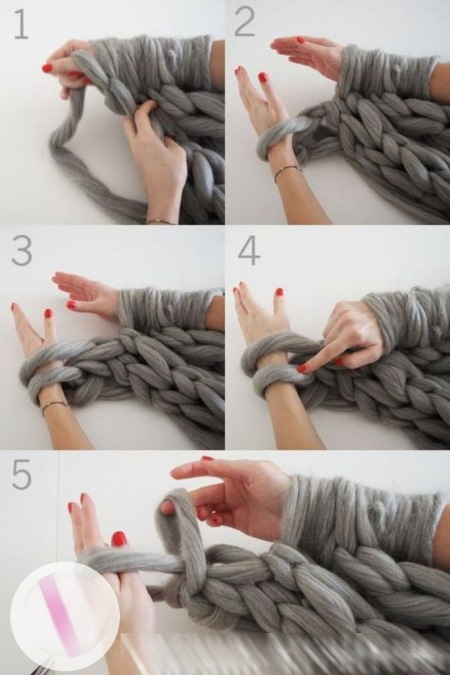
Instructions:
- The first loop is cast on by hand. The hand is used - the thread is thrown over it, then the loop is tightened (not too much, since the yarn is voluminous and there will be no voids).
- The second and subsequent loops are picked up with a brush, pushed along the arm towards the elbow in a straight line. It is important to monitor the size of the loops. Since they are not picked up with tools, you need to control their diameter yourself.
- After finishing the row (the size is controlled independently), it is carefully removed from the hand. Then the second row is collected.
- The last row is closed with a double loop. Take 2 loops, throw the thread through them and tighten. Then repeat the action with the next 2 loops.
There is no need to fix the thread. The product will not unravel due to the heavy weight of the yarn.
Soft toy
To create a soft toy, it is better to choose plush yarn. It is easy to work with, and the finished products are voluminous. Also, you can choose different tools for such threads, both hooks and knitting needles. From voluminous yarn, you can make different toys: bears, hares, foxes, cats. But the easiest to work with is a snowman - this is what beginners should choose.
Instructions:
- An amirugumi ring is created from 6 single crochet chains. This will be the top of the head. The entire base is made from white or light blue yarn.
- From the bottom chain there are 6 half-columns.
- From the 4th row, the number of loops is added by 1 each time until the 7th row.
- Up to row 9, the number of loops decreases by 1 each time.
- Next, the number of loops increases by 7 in turn in each row.
- The number of loops is reduced by 7, after which the exit to the amirugumi ring is performed.
- The ring is not fixed because the snowman needs to be filled. For this, you can use synthetic padding or chlorofiper. Any household rag will also do.
Advice: use fine filler. It is better to cut it into small pieces. Then the filling will be qualitative, there will be no empty zones. Also, such filler is easier to care for - the thing does not fall off after washing in the machine.
- The arms of the stick are prepared. You can use black or brown yarn. In the Japanese technique, 6 chains with a yarn over are performed.
- If desired, stick-like arms with branches are made. To do this, several loops are added to the side of the main chain.
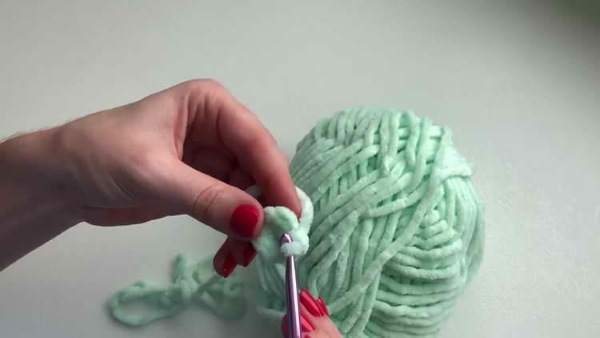
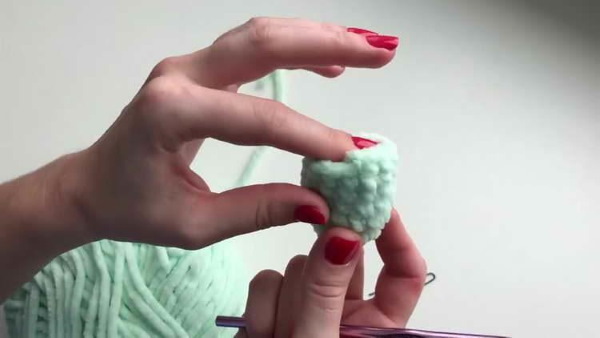




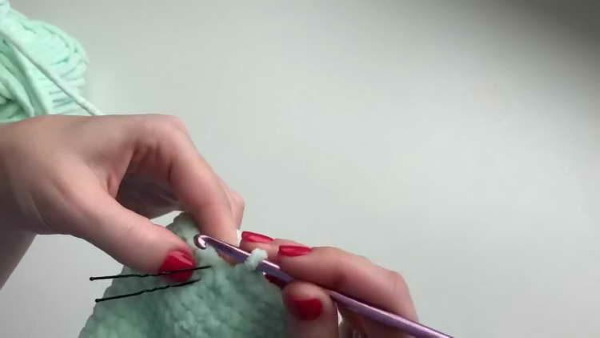
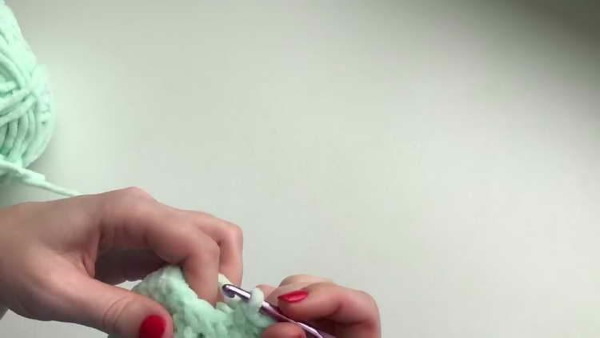
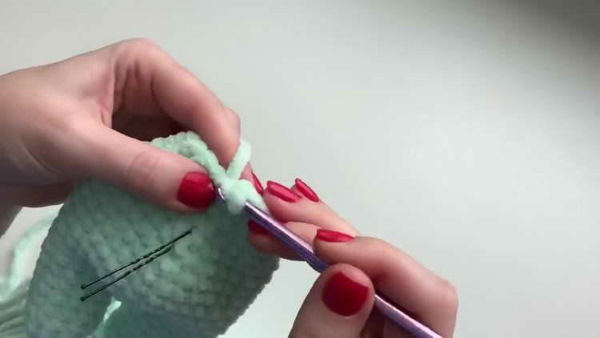
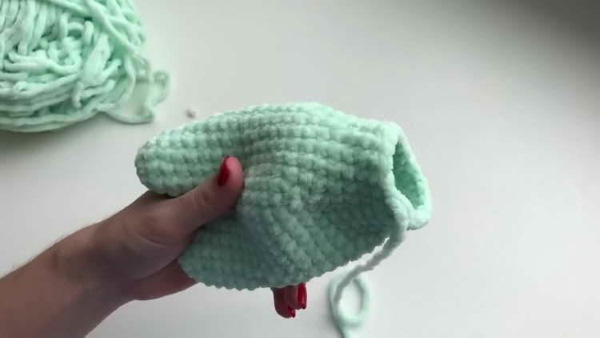

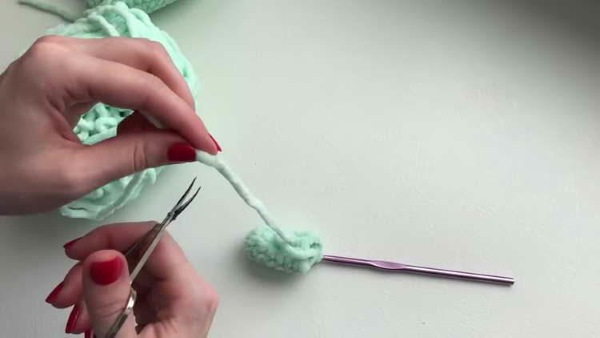

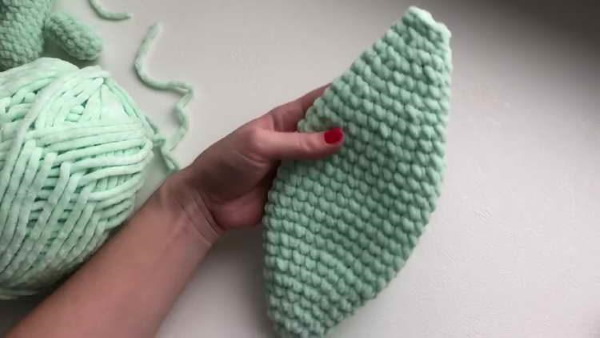
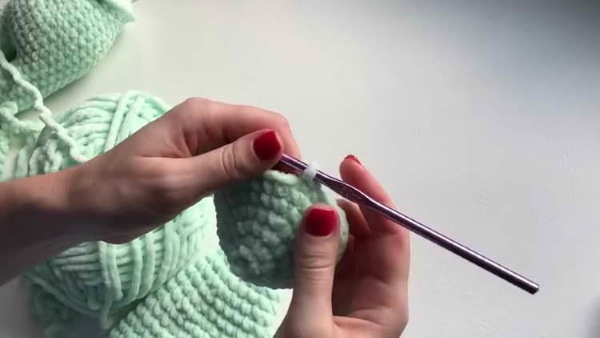
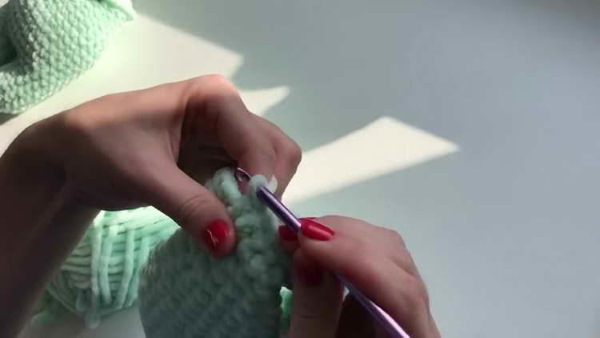
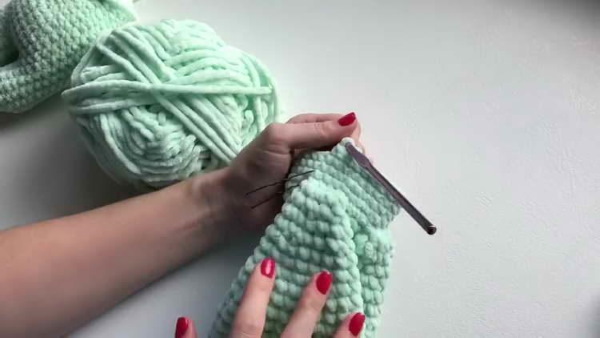
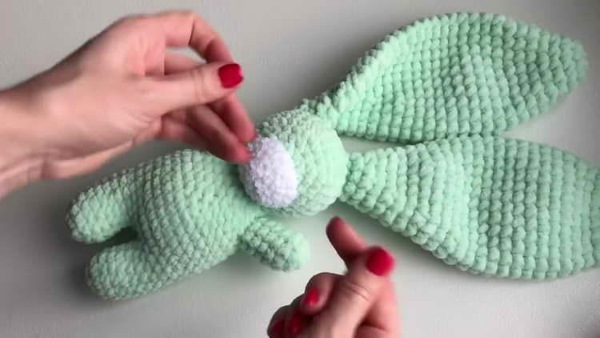
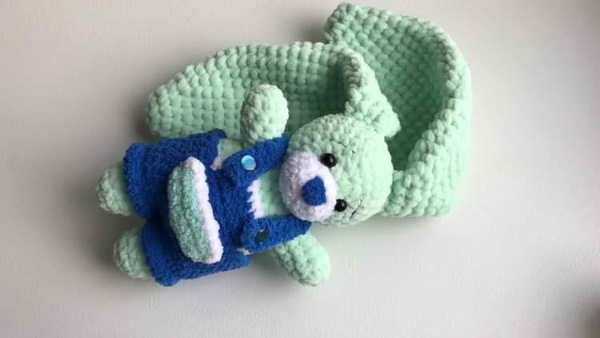
The snowman's face is decorated with embroidery. You can use yarn of different colors, beads, buttons or other decorative elements. Also, a scarf, cape, hat or bucket are knitted separately for decorations if you plan to create a classic snowman. It is better to stick to the knitting technique you initially chose so that there is no dissonance of styles.
Hat and scarf
The most popular yarn product is a scarf. It is from it that they learn to work with knitting needles and threads. To make a snood scarf, you will need material for work and a thick knitting needle No. 12. In the process, you cannot tighten the loops, they should be slightly loose.
Instructions:
- Cast on 18 stitches. The first row is made with beautiful face stitches.
- 2-3 rows are made with yarn overs, slightly tightened so that the product does not creep.
- In the 4th row, the yarn overs are unraveled and a purl loop is made in their place. This is required for the subsequent execution of the pattern.
- In the 5th row, knit stitches again.
- The process is repeated until the scarf reaches the desired length.
- The product is completed by closing the loops.
- After the closed loops, leave a little yarn (20-50 cm, if desired). From this, a cord is woven manually, with the help of which you can later tighten the scarf while wearing it.

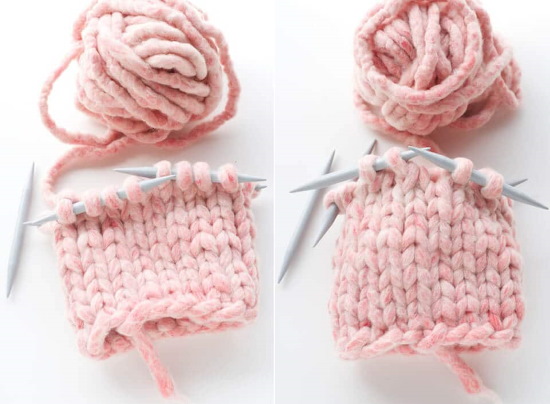


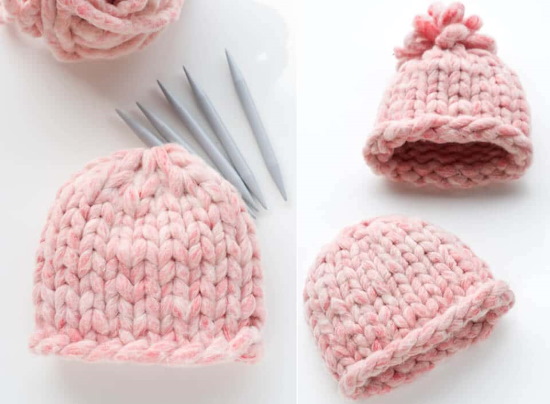
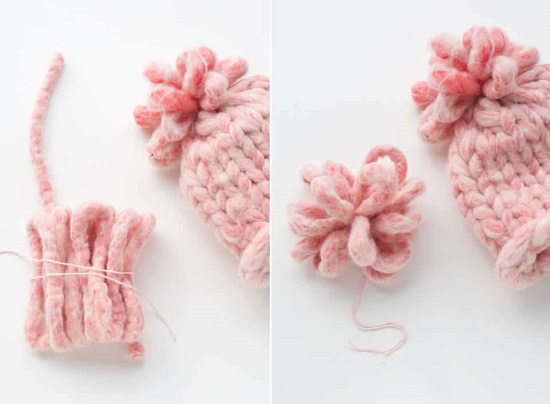
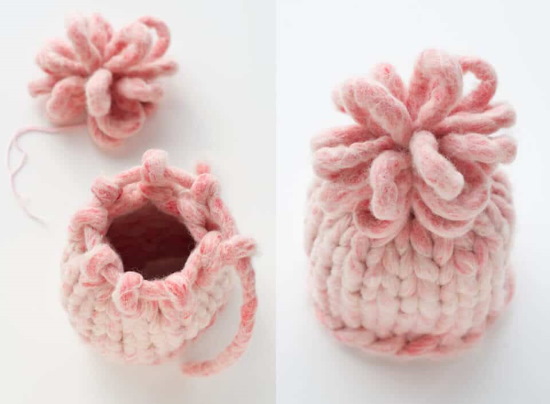
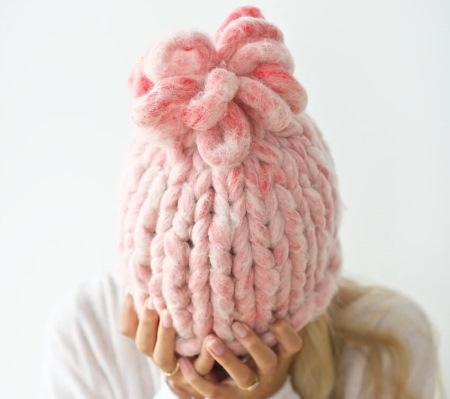
The hat can be made using the same technique, using patterns as desired.
Instructions:
- Straight needles are used, the loops are divided into 4 pieces.
- Knitting starts with an elastic band, so the first few rows need to be pulled tight.
- Cast on 18 stitches, which are raised into 9 rows.
- On row 10, 2 loops are removed. The procedure is repeated with each subsequent row.
- The thread breaks when there are no loops left.
- The thread is pulled to the wrong side and secured. It is enough to tie a knot so that the product does not come apart. Considering the large weight of the yarn, the item will be stretched under its own weight, so it will not unravel.
Bulky yarn is suitable for knitting various things. It is quick and easy to work with, so even beginners can use it.
Video about knitting with bulky yarn
Bulky yarn for knitting:
